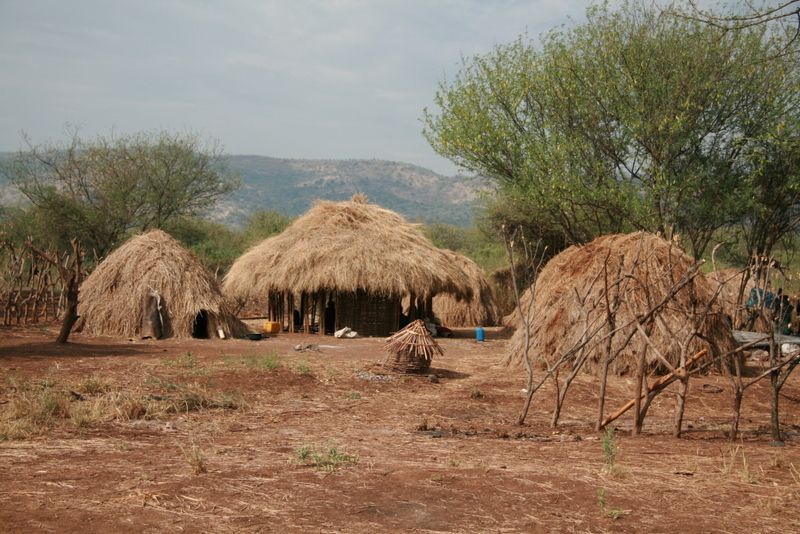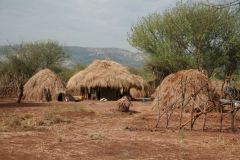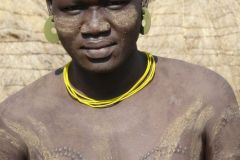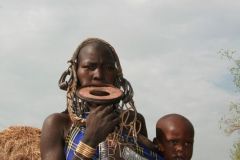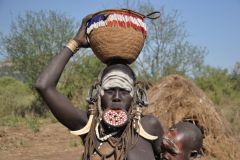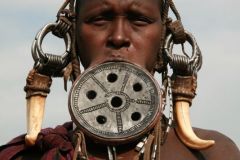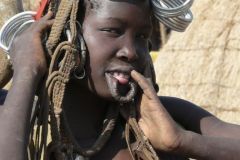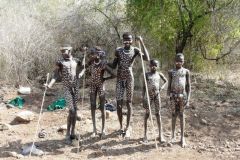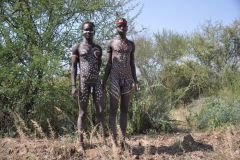Jinka – Mursi and Ari
Jinka is the biggest town in the Omo region and is sometimes dubbed as the ‘Paris of the south’. It is said because of the presence of some streetlights. Don’t expect too much though, the best Jinka has to offer is the big Saturday market and the excellent museum of the South Omo Research Center. Jinka is the base to visit the Mursi and Ari people.
The best place to stay is the recently opened Eco Omo Lodge, just outside Jinka. In town, there is the Jinka Resort and some budget hotels.
Mursi
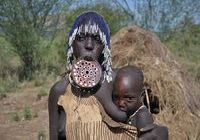
The Mursi are probably the most famous people of southern Ethiopia. This has everything to do with the huge lip plates the women wear on special occasions. Much is written but little is known about the reason for this mutilation. Is it to increase the dowry or was it the become unattractive for slavery? The Mursi don’t give a clear answer themselves. There is an excellent website about the Mursi for the concerned traveler who wants to learn more about these fascinating people which goes much further than their exotic lip plates. The Mursi people have a reputation to be aggressive but we think it is more appropriate to call them direct. They like to touch. Don’t just treat them as photo objects and try to get some interaction going.
Mago National Park
A visitor who wants to go to the Mursi people will enter the Mago National Park. Although it is not the main goal of most visitors the park offers good game-viewing opportunities. Don’t expect the same wildlife encounters as in traditional safari destinations in East and Southern Africa though. A typical drive into the park to a Mursi village will bring many Guenter’s dik-diks and a few olive baboons or guereza black and white colobus monkeys and an occasional greater or lesser kudu and defassa waterbuck.
A more in-depth exploration of the park might show more of the variety of big mammals among them Africa’s well-known elephant, buffalo, and lion. More restricted to this area (and northern Kenya) are the rectangular giraffe and Grevy’s zebra. Birdlife is rewarding too. This is best combined with a (camping) overnight in the park on the bank of the Mago River.
Ari
The Ari people are the biggest group in the Omo region, numbering over 100,000. Speaking an Omotic language (like Hamar and Banna) their origin must be close to the area they live in now but they are very different from the other people living here. Ari are living in wider villages with private compounds on which they have their huts/ houses and grow a variety of crops. They have adopted ‘Western’ clothing. Much of the vegetables and fruits found in the markets in the area are grown by the Ari. They are very hospitable and are not following the ‘pay per click’ approach.


